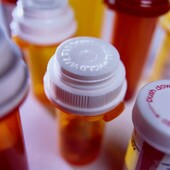Just under one-third of children receive both meds and behavioral therapy
FRIDAY, April 3, 2015 (HealthDay News) — Most children with special health care needs (CSHCN) with current attention-deficit/hyperactivity disorder (ADHD) receive medication treatment or behavioral therapy, according to a study published online March 31 in The Journal of Pediatrics.
Susanna N. Visser, Dr.P.H., from the U.S. Centers for Disease Control and Prevention in Atlanta, and colleagues analyzed parent-reported data from the 2009 to 2010 National Survey of Children with Special Health Care Needs. The authors sought to assess the prevalence of treatments (medication, behavioral therapy, and dietary supplements) among CSHCN (aged 4 to 17 years) with current ADHD.
The researchers found that 74.0 percent of CSHCN with current ADHD had received medication treatment in the past week, 44.0 percent had received behavioral therapy in the past year, and 10.2 percent had used dietary supplements for ADHD in the past year. Overall, 30.7 percent received both past-week medication and past-year behavioral therapy, while 12.7 percent received neither. For preschool-aged CSHCN with ADHD, 25.4 percent received medication treatment alone, 31.9 percent received behavioral therapy alone, 21.2 percent received both, and 21.4 percent received neither treatment. The most common medication class (84.8 percent) was central nervous system stimulants, followed by the selective norepinephrine reuptake inhibitor atomoxetine (8.4 percent).
“These estimates provide a benchmark of clinical practice for the period directly preceding issuance of the American Academy of Pediatrics’ 2011 ADHD guidelines,” the authors write.
One author disclosed financial ties to Nexstim Oy.
Copyright © 2015 HealthDay. All rights reserved.








